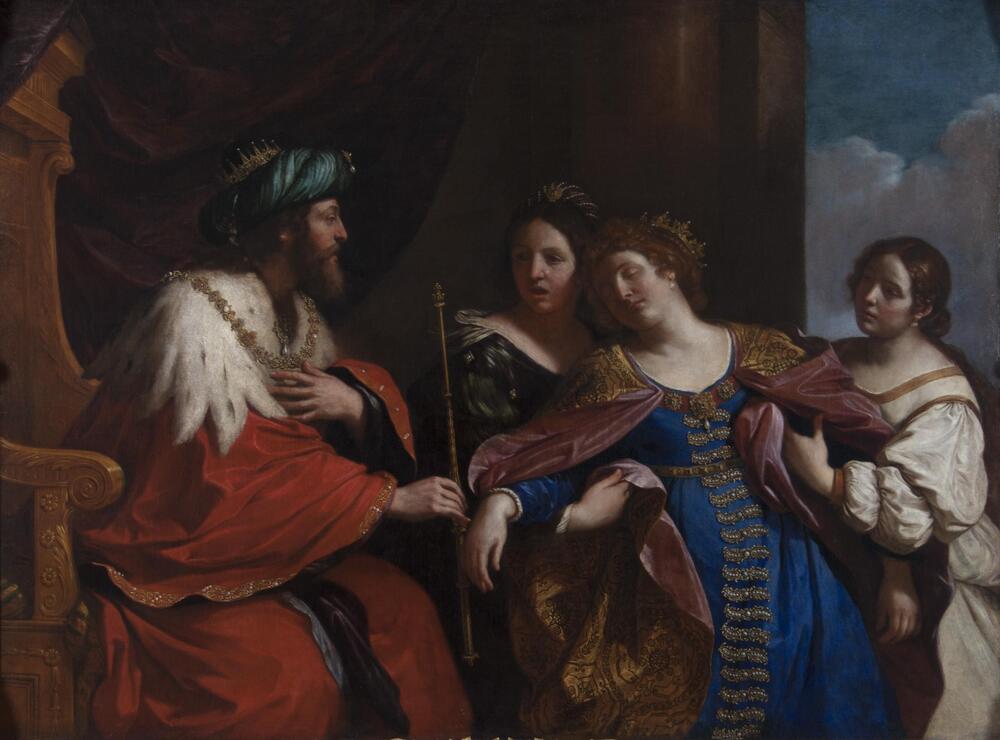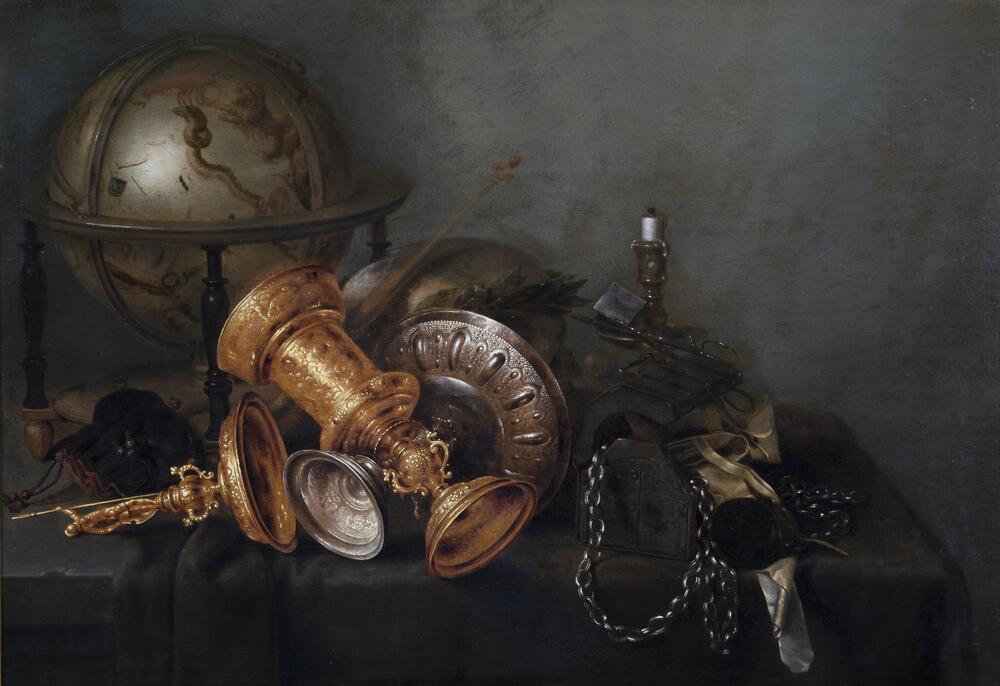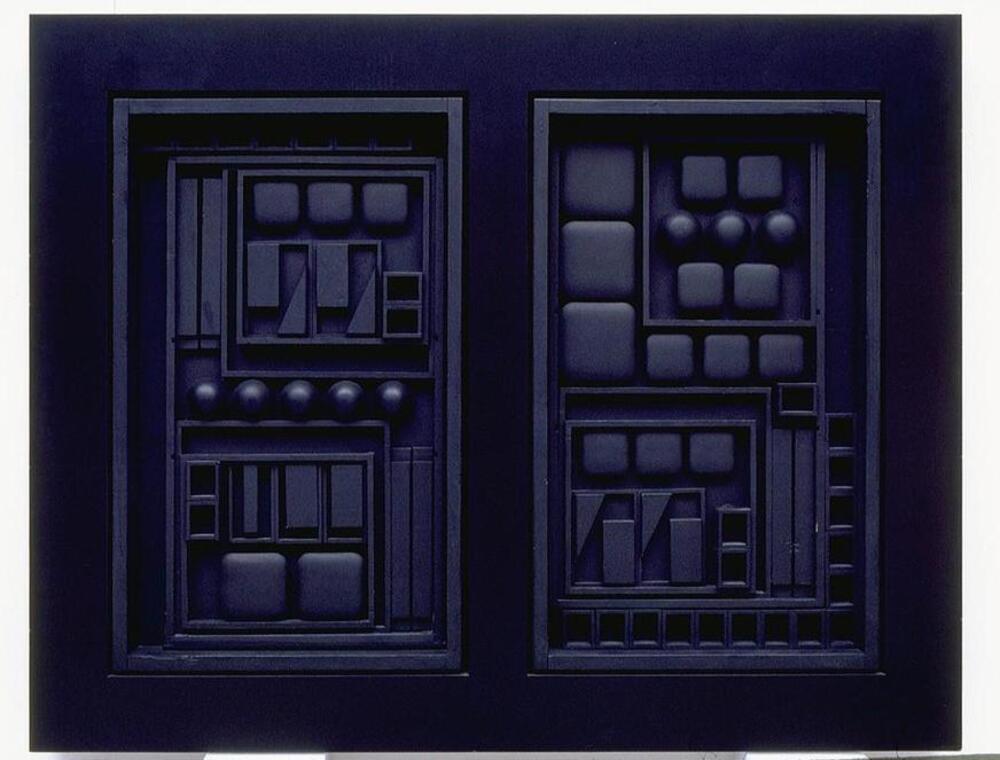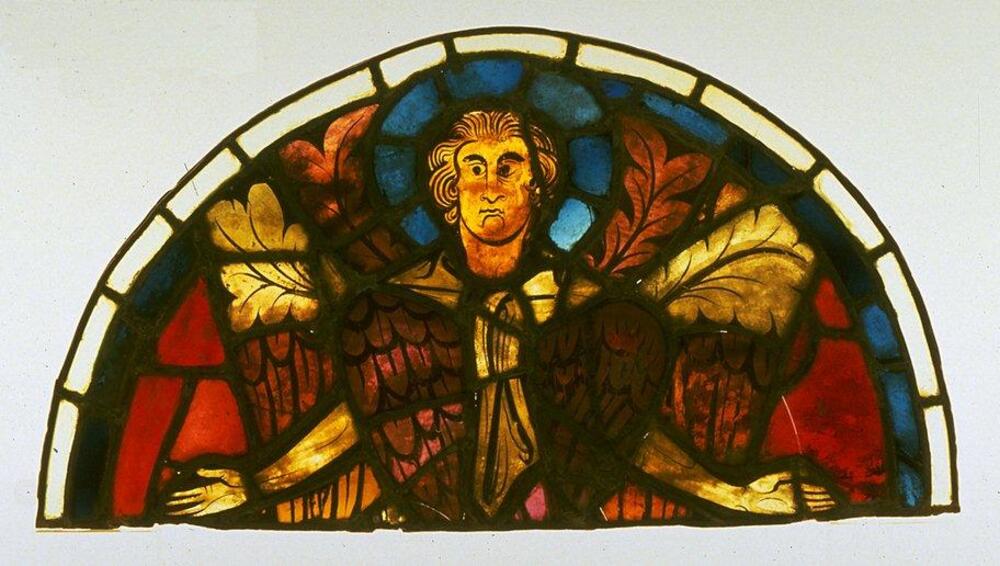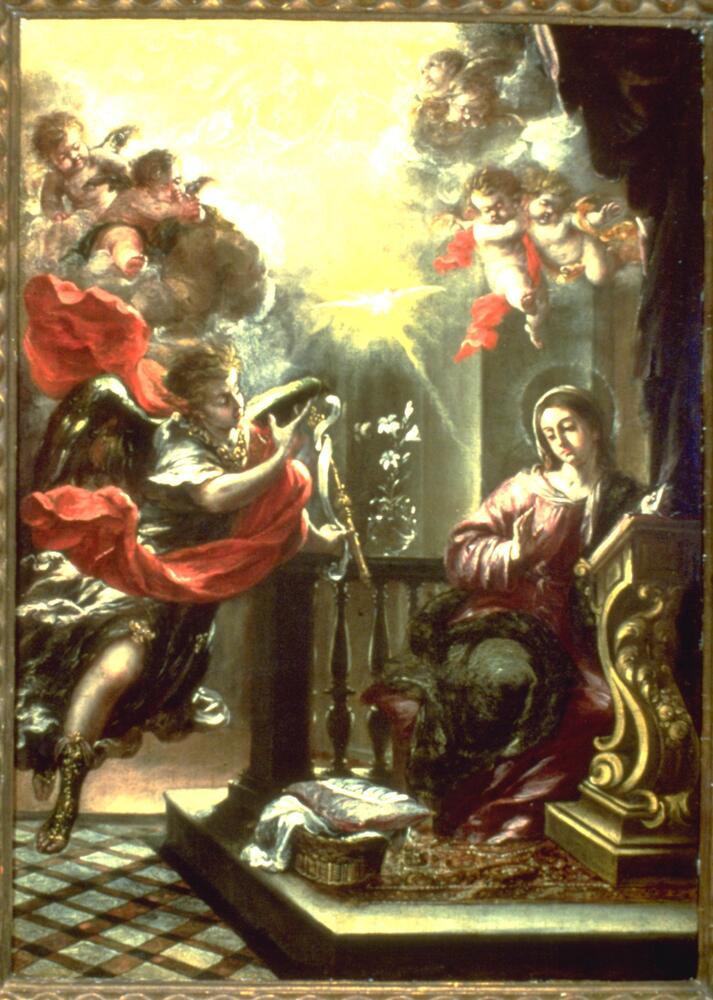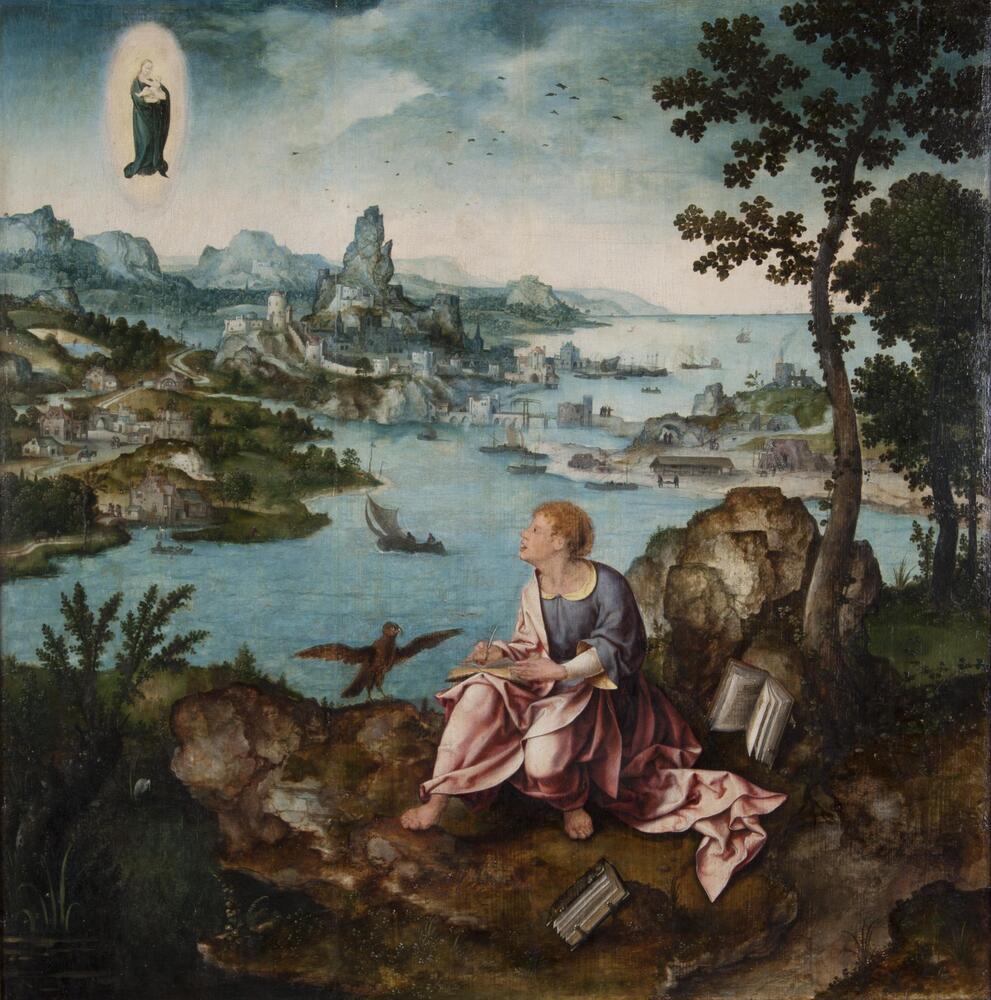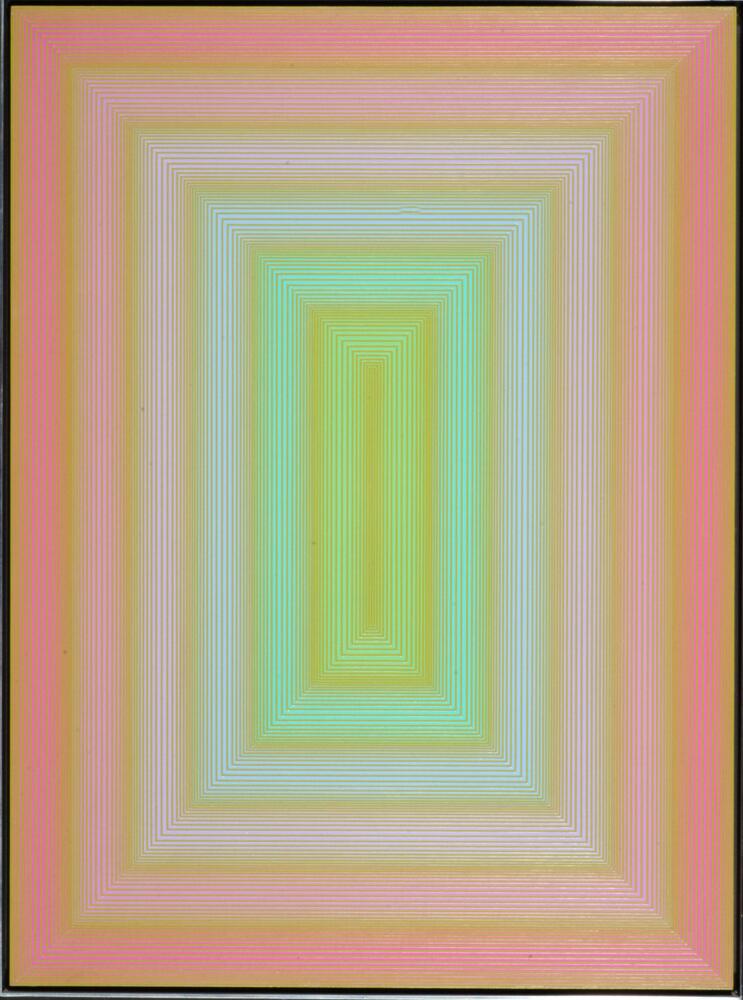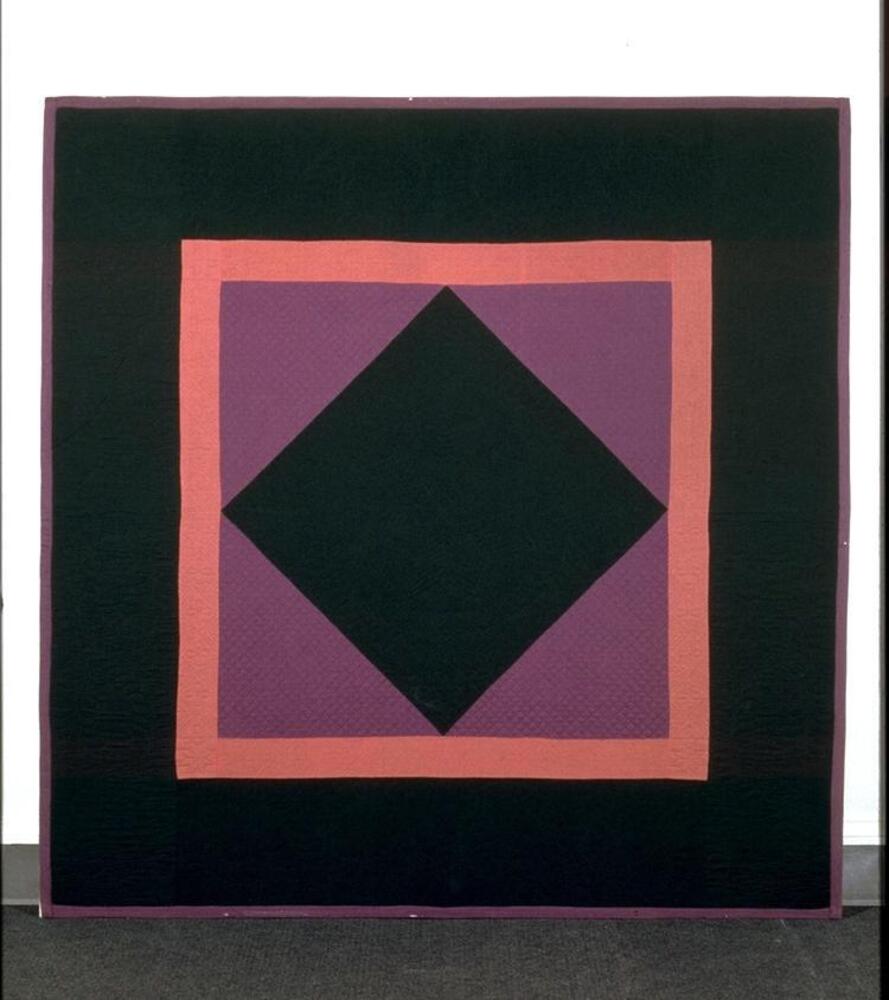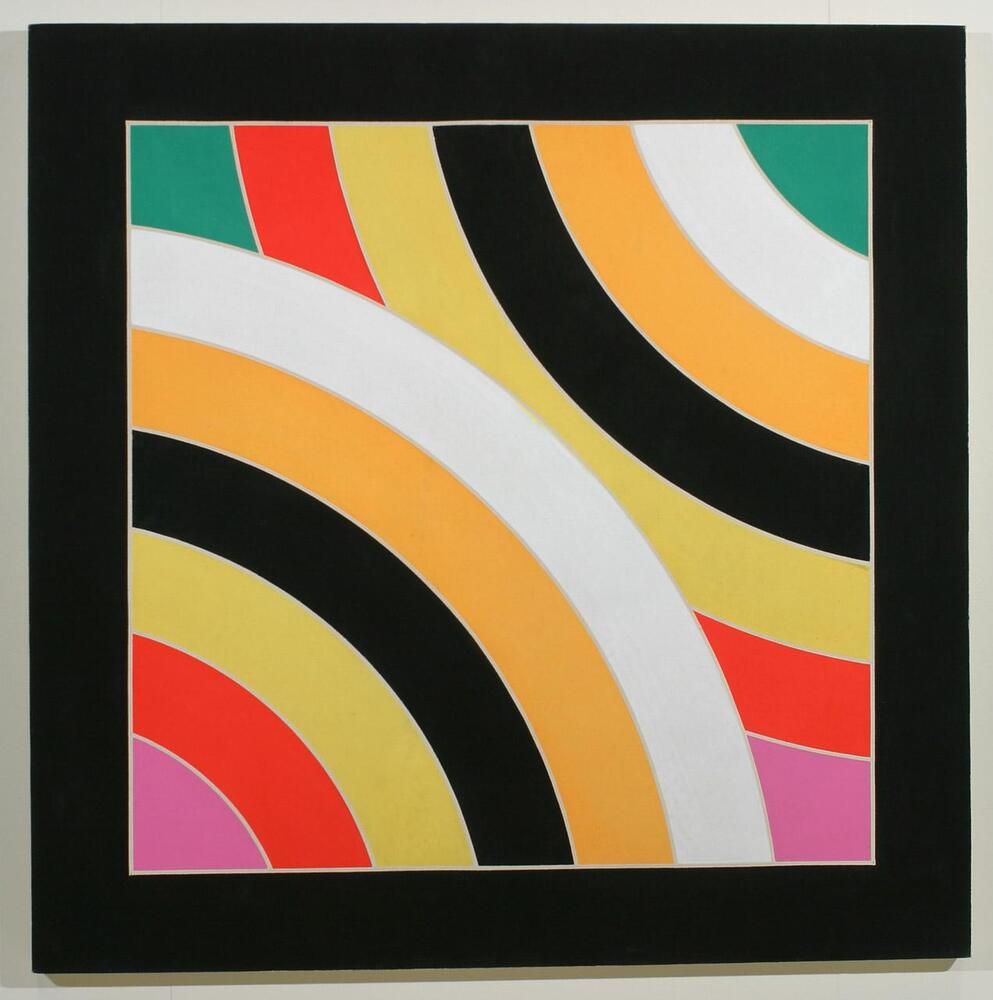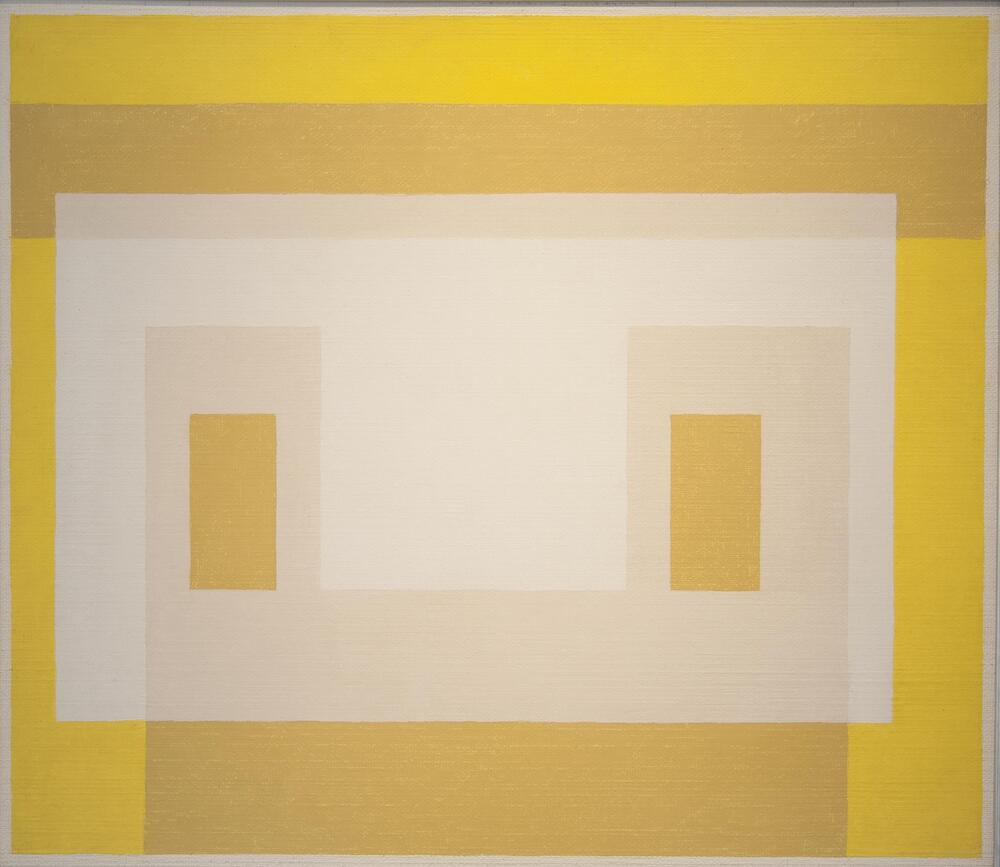Third Grade: Light It Up! Properties of Light and its Cultural Significance
Docent Curricular Tour
Discussion: This tour considers scientific properties of light such as shadow, transparency, prisms, and wavelength. It also asks how shadow creates dimension and emotional messages.
Science Concepts: Shadows are made when light is blocked, and highlights are created by light bouncing off objects. Materials are transparent, translucent, or opaque because of how much light they allow to pass through them.
Art Concepts: Art elements can be employed to create illusions
Engagement Strategies: How do we feel on a dark, gray day vs. a sunny day? How does light affect our emotions? How do light and color relate to each other?
Stop 1: Esther Before Ahasuerus, Guercino
- Where do you see light bouncing off the painting? How can you tell that it's light? What color is it? How does the artist create light?
- Can you tell what direction the light is shining from? How can you tell? hint: where are the shadows and where is the light?
- what does light and shadow do to the painting? Does it make it flat or 3D?
- How does light add to the drama and emotion shown in this painting?
Stop 2: Vanities, Heda
- How is light represented in this painting?
- Can you tell where the light is coming from?
- How does the artist demonstrate how shiny something is? How does he demonstrate that it is a different material? (Glows, reflections, way light hits object)
- Is there more light or more shadow in this painting? What does having shadow in the background do to the painting (creates focus on foreground)
Stop 3: Nevelson
- How do light and color relate to each other?
- What is the rainbow? What is white? What it black?
- What happens in our eyes to make us see color?
- How are reflection and shadow different on black shapes?
Stop 4: Seraph, half medallion from Reims Cathedral
- Where do you think this window was first located? (cathedral) Why would someone want stained glass in a church? (changes mood, makes it a contemplative place)
- What is this figure? (angel) Talk about why angels would be a good subject for a church window.
- Can you see through the glass? Does this make it opaque, transparent, or translucent?
- Does the same amount of light get through for each color? Does more light show through the white glass than the blue glass? Why is this?
Stop 5: Tiffany Window with Wisteria
-Show pictures of Wisteria. Look for ways the artist used his imagination to translate the natural form into glass. Note differences between the picture and the window. Discuss the way the material dictated some of these translations.
-Identify examples of opaque, translucent, and transparent glass in this work? Is the opaque glass used to create a specific part of the wisteria plant? The transparent glass? Why?
-How do you think Tiffany made opaque glass? How do you think he made transparent glass?
-What are the windows like in your house? How is this different? Why do you think it is different?
Stop 6: Tiffany Vase
-What is this object? What would you use it for?
-Why did the artist make a functional object so beautiful?
-Introduce the word ‘Iridescent.’ Define and discuss
-Look around the gallery (let children walk around). Does the color of this vase remind you of the color of any other pieces in this gallery? (peacock feathers?)
-What happens when the light shines on this vase? Is it the same or does it change?
Stop 7: The Annunciation, Leal
- The artist makes light travel in a very straight line and also it goes out in other directions. Where is the straight line light? How do you know the light is going in other directions? (highlights and shadows)
-What happens to the light as it shines on different objects in the painting? (it stops, is reflected, is absorbed)
-Look carefully at the lightest place in this painting. What do you see? Why is there so much light surrounding this figure?
Stop 8: John the Evangelist on Patmos
- Where is there more light in this painting? What can you see there? Where is there less light? What can you see there?
- Why do you think the artist has light surrounding the floating figure? (introduce the term symbol, define, discuss)
Stop 9: Sunset Near Darien, John Frederick Kensett
- What time of day is it in these paintings?
• How can you tell?
• What is happening in these paintings?
• What is happening to the trees and the landscape as the sun is setting?
• Shadows
• Lack of color because of the shadow
• Direction that the light is coming from determines the shadow.
• Color blending
Stop 10: Condensation, Richard Anuszkiewics
What colors are in the paintings?
• Does anyone know the relationship between red and green?
• Complimentary colors
• Primary, secondary, complimentary
• This artist was interested in demonstrating why people like looking at colors that blend well together and the effects they have on each other.
Stop 11: Quilt with central diamond pattern
• What colors can you see in this quilt? • Are they complimentary, primary,
secondary?
• How is this quilt different than the Anuszkiewics painDngs?
• What are some of the differences in colors?
• What are some of the similariDes?
• Shapes
Stop 12: Alber's Chain, Sam Gilliam
• Does this banner remind you of anything?
• It has all the colors of the rainbow!
• Secondary and primary colors
• What feelings to the colors give you?
• Excited? Yes! • Bored..? No!
Stop 13: Untitled, Frank Stella
• what is different about this painDng to the sunset painDngs?
• There is no shading
• Which color stands out the most?
• Black
• Why? (absorbs the other colors) • Which other colors stand out? • Which colors stand out the least?
Stop 14: White Front, Josef Albers
• Relationships of colors to one another
• What colors do you see in this painting?
• How are all these colors related?
• How do you think the artist has created the colors in this painting?
Part of 1 Learning Collection
<p>Docent Curricular Tour</p>
Rate this Resource
AVG: 0 | Ratings: 0
& Author Notes
Creative Commons by-nc-saLast Updated
April 27, 2017 10:29 a.m.Report
Reporting Policy
